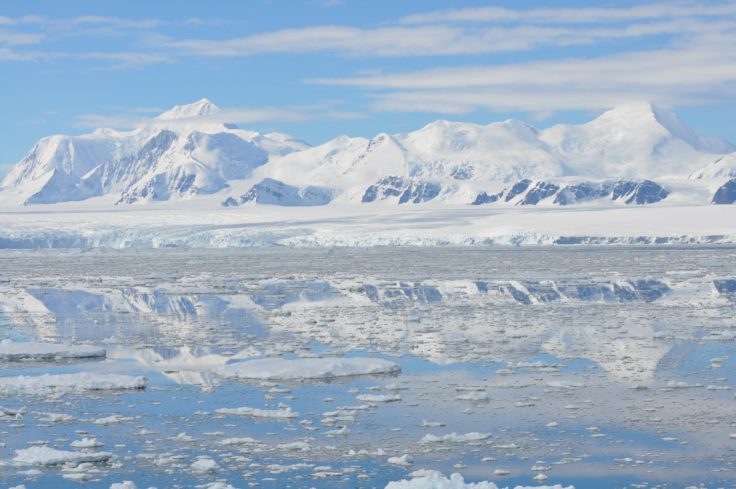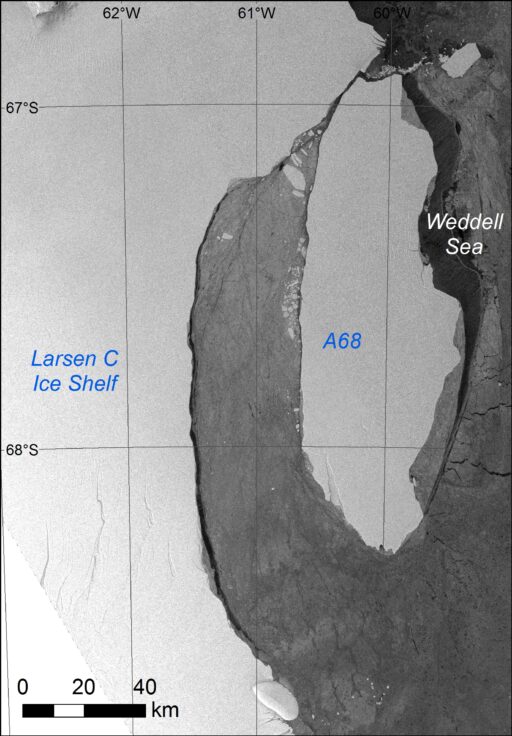Special issue on how oceans are changing
The seas around the Antarctic Peninsula are biologically extremely rich, but are climatically sensitive, having experienced some of the fastest warming globally in recent decades. A special issue of the journal Philosophical Transactions of the Royal Society A published this week (14 May 2018) puts this region in the spotlight with a combination of the latest research on how it is being affected by environmental change.

The special issue brings together contributions from international marine scientists from 28 institutes who study the region’s ocean dynamics, biology, chemical oceanography and biogeochemistry. As well as presenting new research, this issue contains synthesis papers, and a “horizon scanning” introduction to address the outstanding research questions and knowledge gaps that exist in the field.
Lead editor Dr Kate Hendry, Reader at University of Bristol, says:
“There is currently a keen interest to improve our ability to study the impact of environmental change on Antarctica, and its feedbacks to the Earth System. The special issue progresses this important area of science by developing new ideas and strategies for the future of marine research in a region of rapid change.”
Professor Mike Meredith, Head of the Polar Oceans Programme at British Antarctic Survey, and a guest editor on the issue says:
“This is the most up-to-date assessment of what’s happening to this climatically sensitive region, where scientists are observing profound changes in the ocean. It draws out new knowledge concerning how the Antarctic seas are changing, and what their impacts are for marine productivity, ecosystems, and glacier retreat in what is a highly sensitive system. We now need to build on this new knowledge, and use it to improve predictions of how this and other polar regions will change into the future”
One featured paper led by British Antarctic Survey (BAS) shows that calving of giant icebergs in Antarctica can increase biological productivity and sequestration of carbon at the seabed.
When giant icebergs break off ice shelves, many things happen – the spaces opened up can act as important new sinks for carbon, the icebergs fertilize the water column as they travel making additional mobile carbon sinks, and they can collide with the seabed recycling the carbon within the system.

Lead author and marine ecologist David Barnes from BAS says:
“Iceberg creation and their seabed collisions matter because they both help and limit powerful ‘services’ that marine biodiversity performs in the polar regions, such as how much carbon is captured and stored by animals on the seabed.
“For example, when a 5000 square km giant iceberg calves, as happened at the Larsen C Ice Shelf in 2017, it may ultimately generate a million tonnes of carbon sequestered on the seabed. This is a powerful negative feedback on global warming; equivalent of offsetting hundreds of thousands of cars.”
When the Larsen C iceberg broke away in July 2017 it exposed around 5,818 km2 of seabed. The creation of open water above a potentially productive seabed is significant for enhancing regional biodiversity, which is important for long-term storage of carbon. Even if it is only in the first few years of new colonisation and productivity, newly exposed shelf areas clearly capture and store carbon more rapidly than ‘normal’ annual incremental growth.
The marine system of the West Antarctic Peninsula: status and strategy for progress is published in the Philosophical Transactions of the Royal Society A on 14 May 2018, with support from the Southern Ocean Observing System (SOOS).
Read the collection of 14 papers here